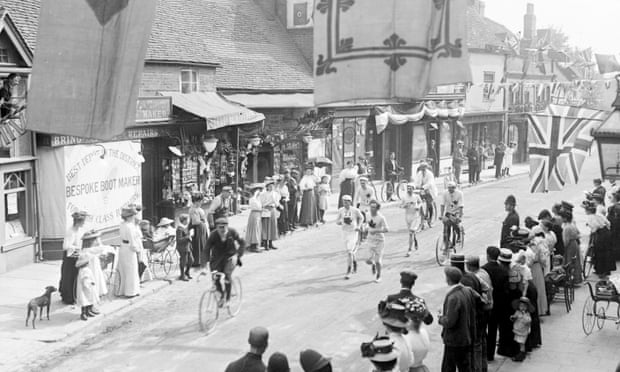Doctors (and later nurses, physiotherapists, nutritionists, and other biomedical staff) have been present at the Olympic Games from the very beginning but the pathway to modern Olympic polyclinic can only be described as adventurous.
In 1896 (Athens) the marathon and water sports got most of the medical attention because they were thought to be particularly dangerous. As well as traveling “in carts” behind the runners, doctors also waited “in sheds” to attend to swimmers. In 1900 (Paris) ambulances were provided, and as the July weather got hotter tents were set up for the gymnasts to shelter in during their events.
The marathon caused controversy for 1904 (St Louis) when the winner, Thomas Hicks, crossed the finish line with “dull lustreless” eyes and “ashen” face – “he could scarcely lift his legs [and]…there was more or less hallucination”. Hicks had struggled to complete the course and been assisted by egg white, brandy, hot water baths and sulphate of strychnine. Other runners struggled, in part because there was only one place to get water, a well at the 12-mile mark.
London in 1908 improved on this situation considerably. For the first time entrants to the marathon had to produce a doctor’s certificate (or be medically examined) to prove they were in a fit state to run the race. Refreshment stalls were set up, many provided by the commercial company Oxo.
In 1912 (Stockholm) the organisers asked cyclists as well as marathon runners to have fitness certificates. They also set aside three rooms in the stadium with beds, and five medical stations were created along the course of the marathon. All this did not prevent the first Olympic death – Francesco Lazaro, from Portugal – who collapsed and died, despite prompt roadside attendance and evacuation to a hospital. In response, the seven doctors on duty at the stadium clinic wrote an open letter to the International Olympic Committee (IOC) recommending that the marathon should be scheduled during a cooler part of the day, rather than the early afternoon.
This medical advice was heeded, and for the first Games after the First World War – 1920 (Antwerp) – the organising committee scheduled the marathon for 4pm. First aid was now coordinated by the Red Cross; nearly 50 doctors and 200 nurses and ambulance personnel worked in first aid rooms and tents near the competition sites.
The Medical Services’ focus remained on emergencies and injuries in 1924 (Paris), where again, competitors collapsed during the marathon. This was despite the fact that the British brought an official team doctor for track and field – Adolphe Abrahams, brother of runner Harold – who was the inspiration for the film Chariots of Fire.
To avoid future problems the British team brought in medical screening for all athletes going to Amsterdam in 1928. Here medical attention was particularly focused on the women’s 800m, run for the first time against strong opposition because of persistent Victorian gendered attitudes towards women’s athletic performance.
1932 was the real start of familiar modern medical provision at the Olympics, as Los Angeles built the first Olympic Village. This meant that for the first time a dedicated Olympic “hospital” was built, with 24-hour staffing and extensive facilities, including radiography and a laboratory. In 1936, Berlin’s organising committee built an even bigger hospital: two storeys, 27 rooms, and a medical team of 171 volunteer doctors and 200 auxiliary staff, many drawn from the German armed forces.
Despite taking place in a London still on the ration book, the ‘austerity Games’ of 1948 managed to provide extensive healthcare services. There was no village, but a polyclinic was installed in Wembley stadium with 12 beds, and facilities for first aid, minor surgery, physiotherapy, and massage – elsewhere medical facilities at sports grounds were co-opted, extended, or renovated for the Games. Private companies chipped in too: Boots the Chemist provided free drugs and pharmaceutical advice and installed a 24-hour, multi-lingual staff service in their Piccadilly branch. TJ Smith & Nephew Ltd donated first aid materials, and local hospitals (some about to become part of the NHS) promised care and beds for athletes.
By 1952 (Helsinki) medicine at the Olympics had settled into a pattern that looks very familiar today: polyclinics or mini-hospitals were built at the village and a huge network of first aid and emergency posts was set up. Local healthcare institutions promised to care for serious and special cases, and voluntary first aid organisations deal separately with crowds and visitors; military support was gradually phased out in favour of civilian volunteers, hundreds – later thousands – of whom were coordinated by an expert medical committee, and private companies offer sponsorship or donations.
Reference
Edited from the full article ‘Medicine at the Olympics: A bluffers guide to 120 years of medical history’, accessed at https://www.theguardian.com/science/the-h-word/2016/aug/09/medicine-olympics-a-bluffers-guide-to-120-years-of-medical-history on 31 August 2021.


A perfect moment for this contribution with interesting facts. Thanks